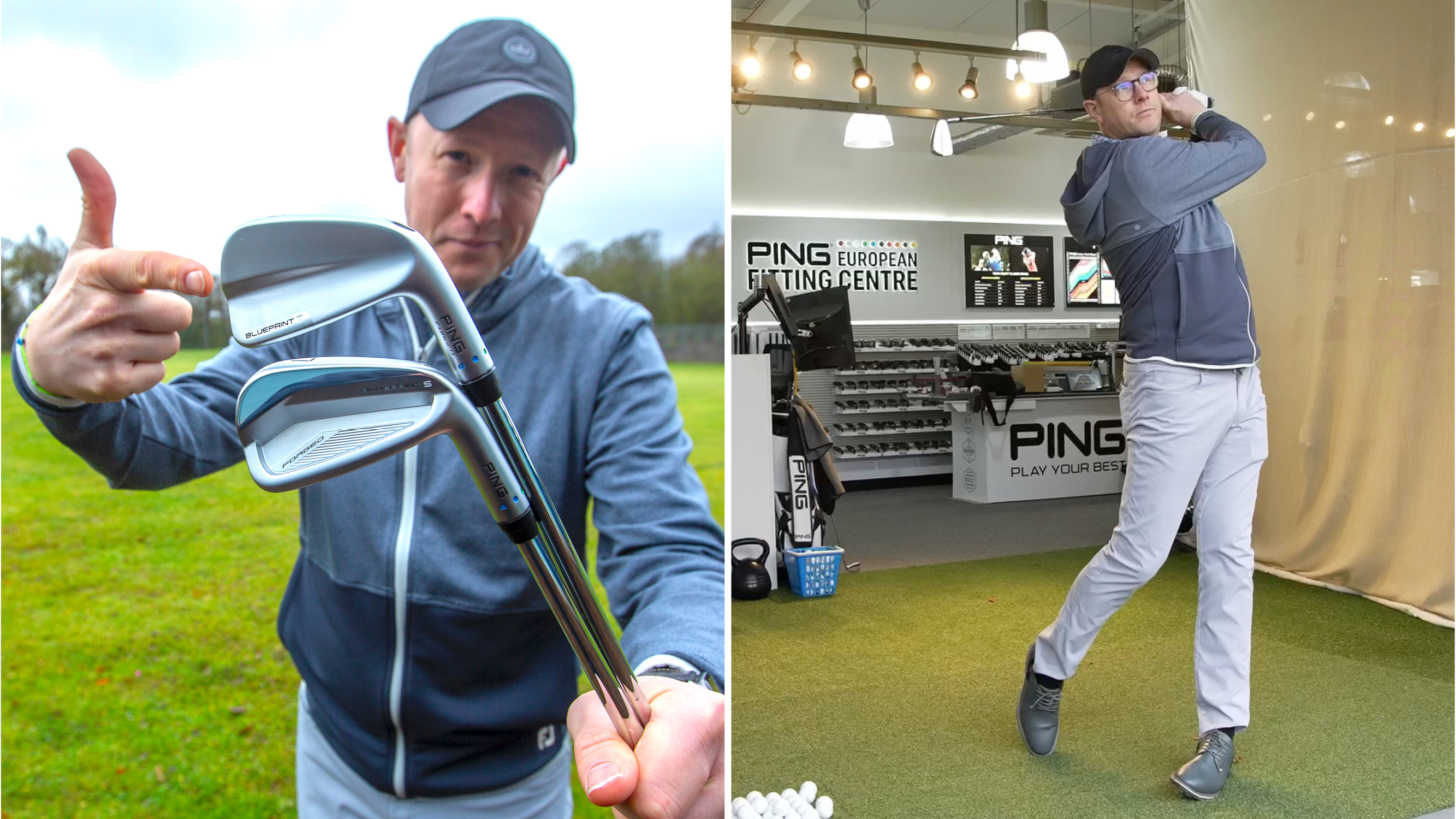
The last time I went for an iron fitting was back in 2018. Despite my ball striking usually being a strength, I remember struggling at the time and the set I opted for, was the Mizuno JPX 919 Forged. This mid-profile model offered me the mix of feel and forgiveness I was looking for and over the last couple of years, I’ve seen a significant improvement in my iron game. The Arccos data below shows how my approach play compares to the average for a 3-index golfer:
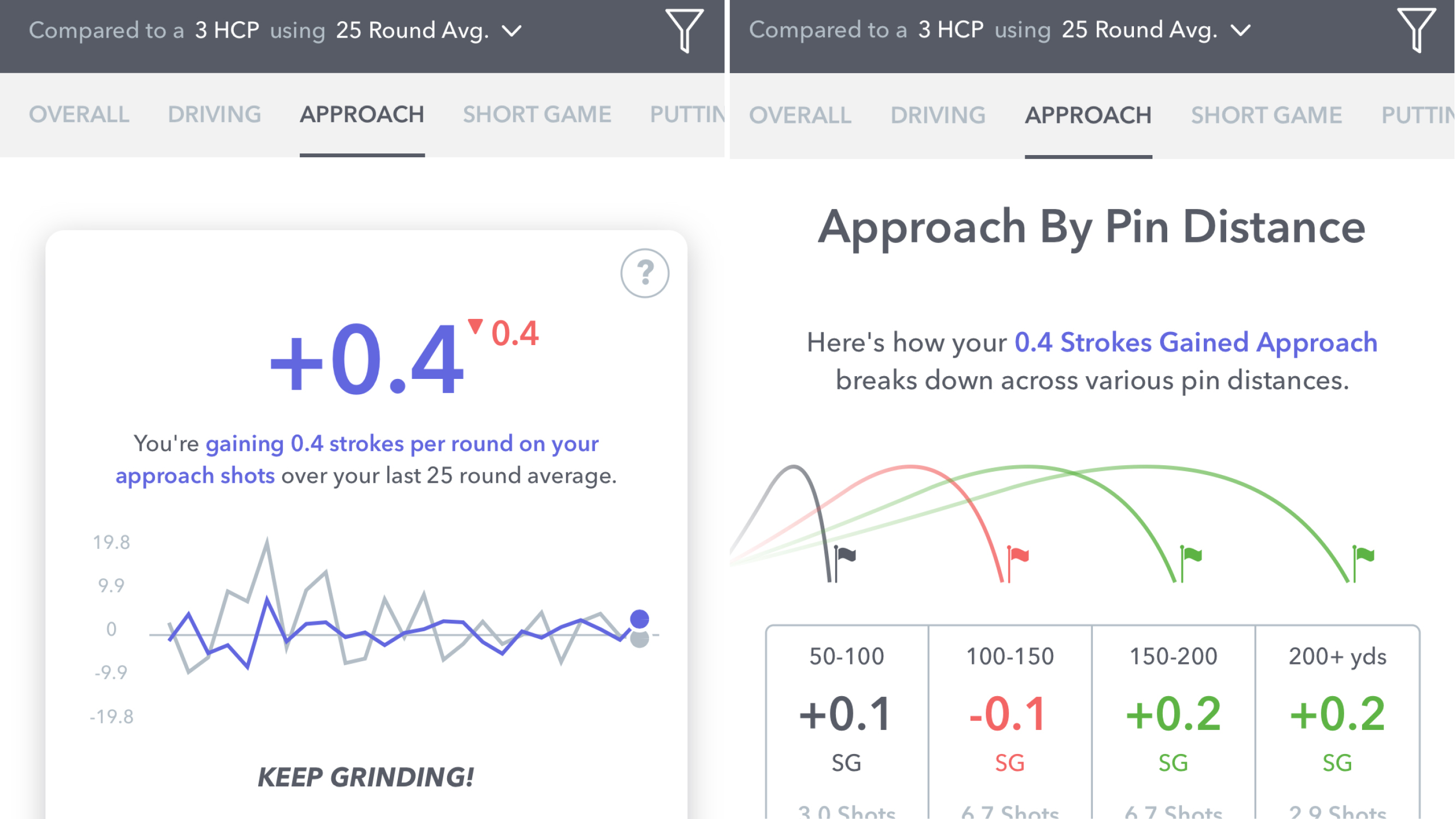
Despite the improvement, as 2024 dawned, I began to think that a change was due. Was there an iron out there that would provide me with a higher level of performance? How has the fitting process itself changed, and could this be the key to lower scores? The video and article below reveal what happened when I went to see PING for my first iron fitting in five years.
My interest was peaked when I discovered PING had updated its Blueprint offering for 2024. In particular, the brand introduced a new Blueprint S model that is a modern day take on the popular PING S55 that dates back to 2013. That S55 model was the first time I’d ever played a PING iron and I loved them.
Alongside the ‘S’ is the Blueprint T. This is as classic, slimline and blade-like as you will find anywhere in 2024 and whilst I thought I’d enjoy testing them, realistically (I’m a 3.9 index golfer), my sights were set on its’ slightly larger and more forgiving relative.
So in December I headed to PING’s European Fitting HQ at Thonock Park GC and met up with expert fitter, Billy Rymer. After a full warm-up, I hit a series of shots with my own Mizuno JPX 919 Forged 7-iron. Below you can see the launch data:
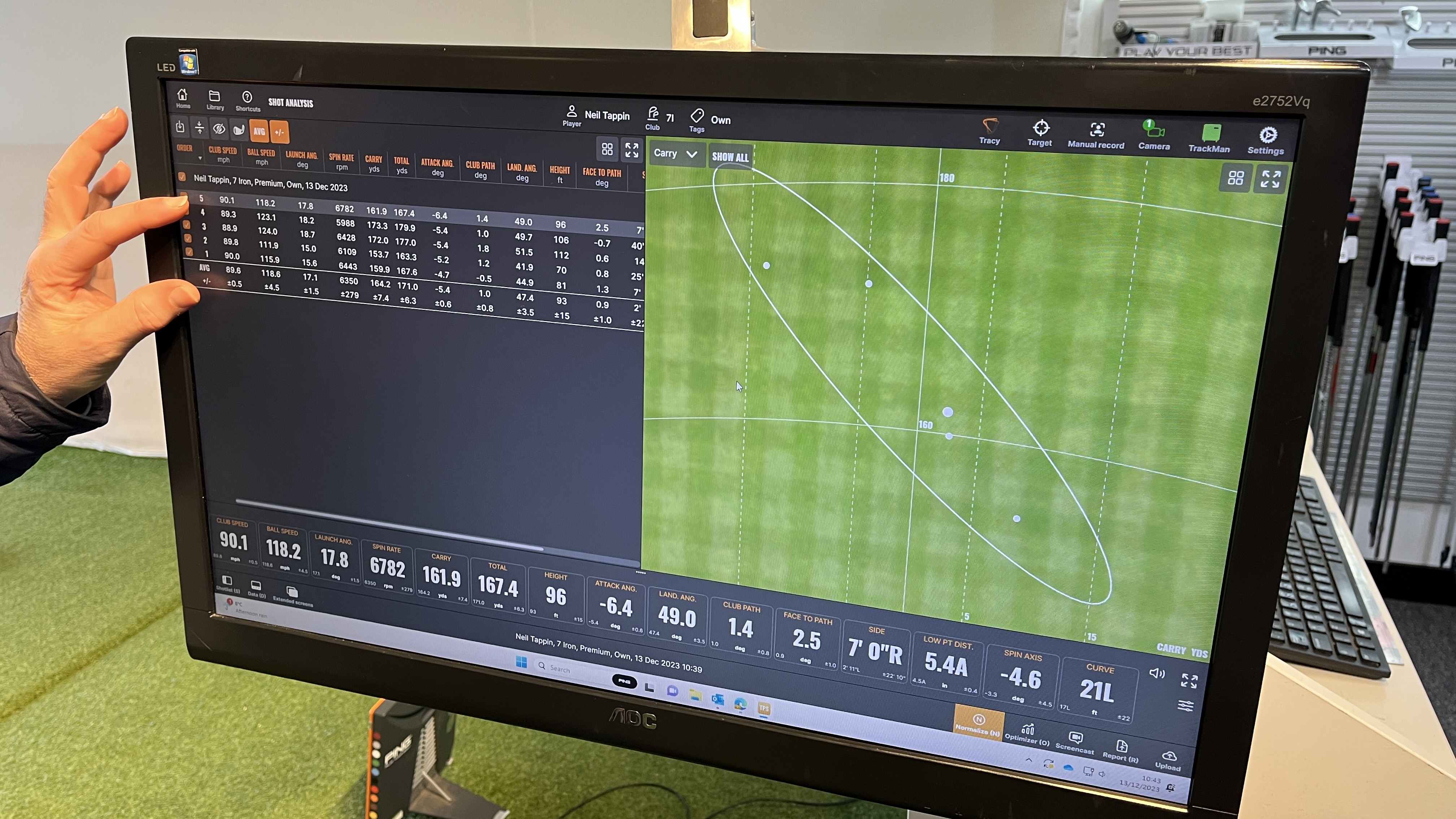
This shot pattern is indicative of my iron game. I tend to hit a lot of shots out of the bottom groove and this causes a significant drop off in distance. Interestingly, the difference in carry distance between this and my best strike was 20-yards! Unsurprisingly, as my Arccos data below shows, my most common miss is short - that’s because I often find myself clubbing for my best strike and then hitting the one that comes up short and right.
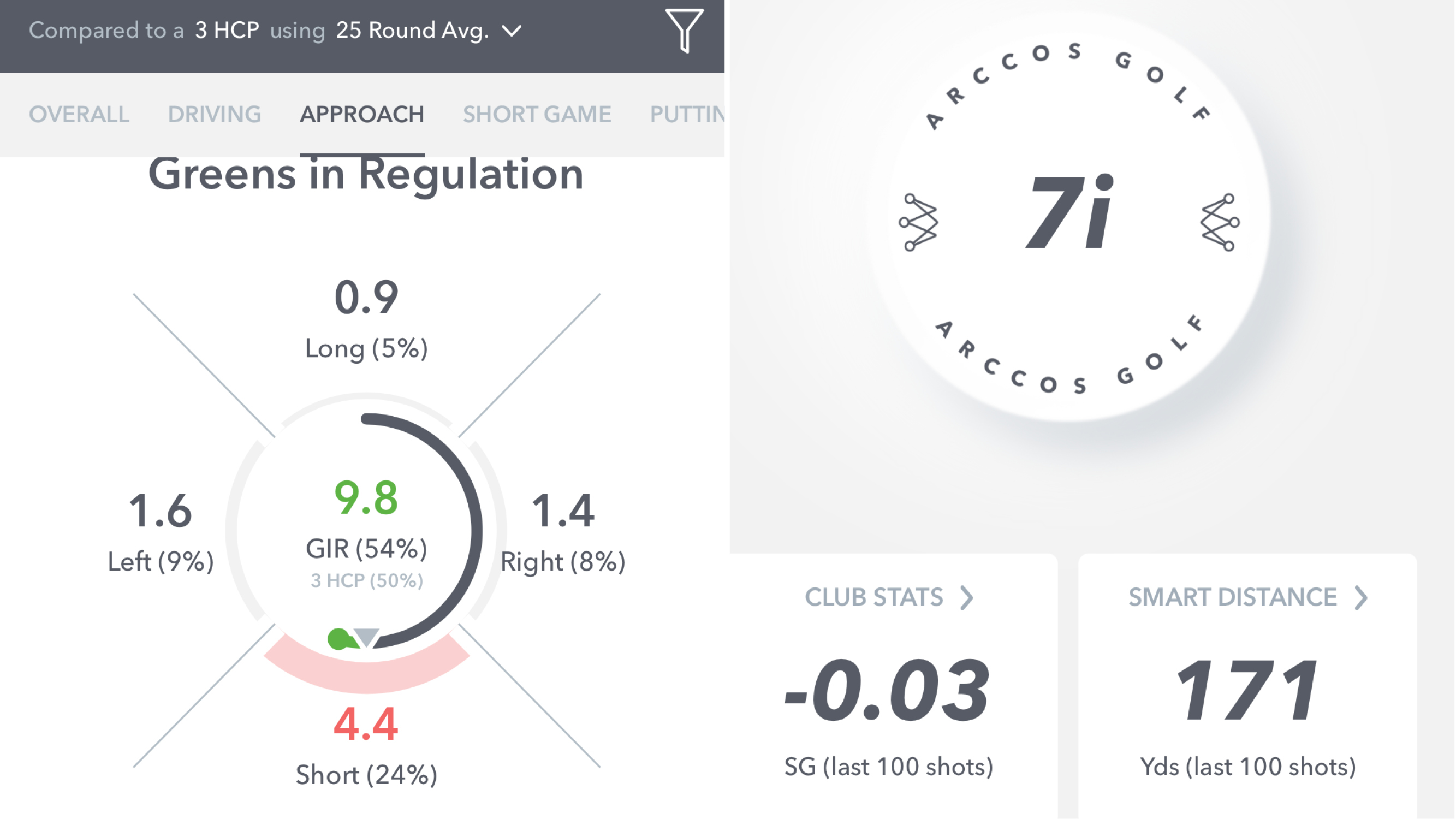
And so, the challenge was clear. Was there anything in the PING range and any setup tweaks Billy could make, that would help? As you’d expect, we started with the static measurements (height and wrist to floor). Using PING’s colour code chart, Billy immediately advised going 3˚ upright and .5in longer than standard. Whilst the length was what I was accustomed to, the lie angle was more upright - this should help guard against the ball starting too far to the right, something I often struggle with.
He then matched up the shaft in my Mizuno irons with the nearest option in the PING offering. This was the Dynamic Gold X100 (a shaft I’ve used a few times in the past). Whilst we tested a range of other options, this ended up being the best fit for my swing. Below you can see how both the Blueprint S (dark blue) and the Blueprint T (light blue) compared with my Mizuno irons (white).
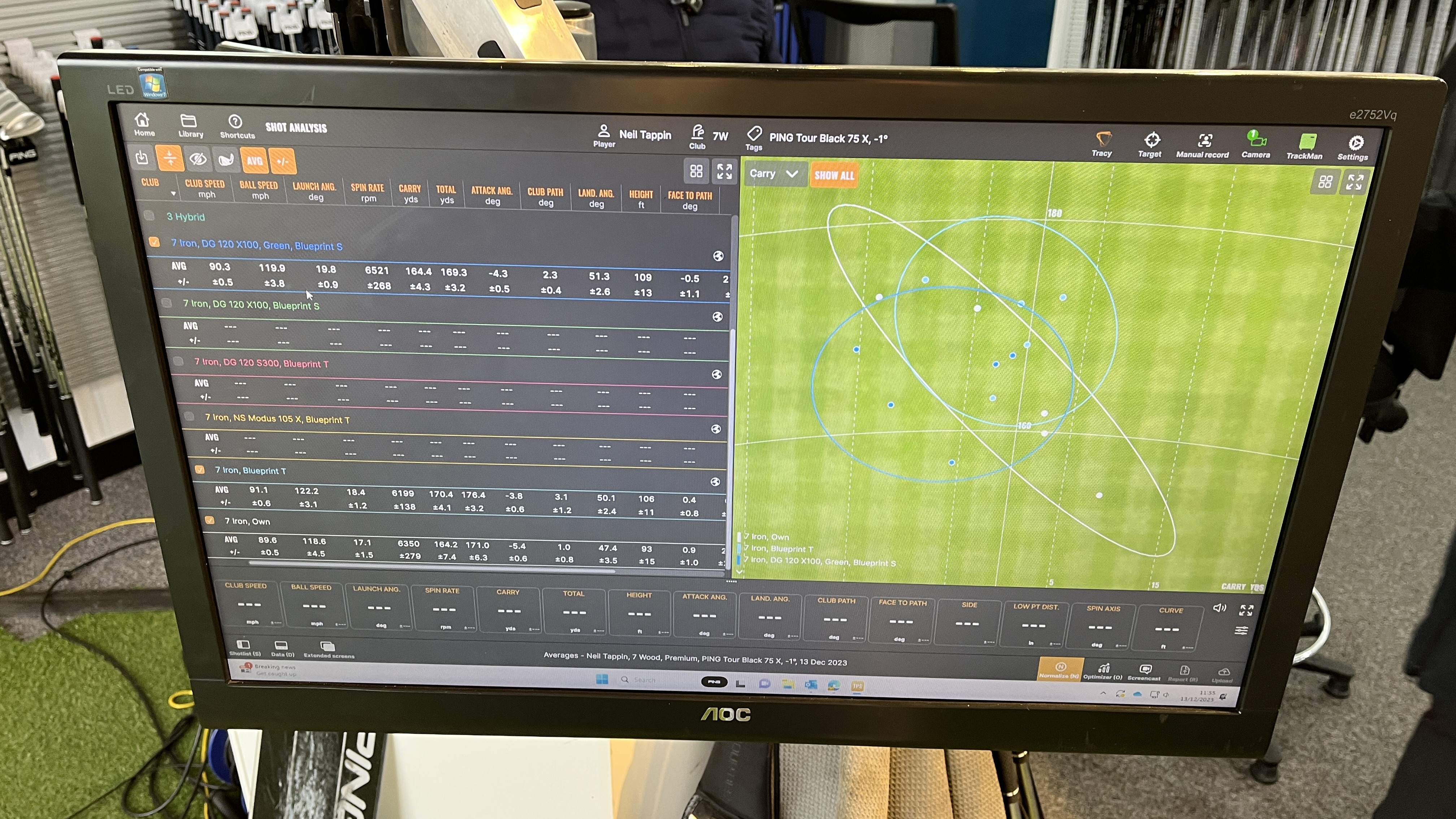
What’s clear is that, with both new irons the front-to-back dispersion was reduced. Surprisingly, it was the Blueprint T that performed best for me on the day. With slightly less offset, I was a little straighter and there was a slight improvement in the average distance too. The evidence was clear, Blueprint T was the way to go.
However, this is where, as the player who will ultimately be using them on the course, I needed to make a decision. It might not look it in the photographs but to my eye, the Blueprint T is significantly more compact than the S model. The topline is thinner, but more worryingly for me, the heel-to-toe blade length is shorter. Would looking down on such a compact blade at address affect my confidence?
At this point Billy and I discussed the options and we opted to replace the 4 and 5-irons with the Blueprint S to provide a more confidence-inspiring look at the top end of the bag, as well as some additional forgiveness. PING's co-pilot fitting technology was able to project my club-by-club carry distances with this set composition.
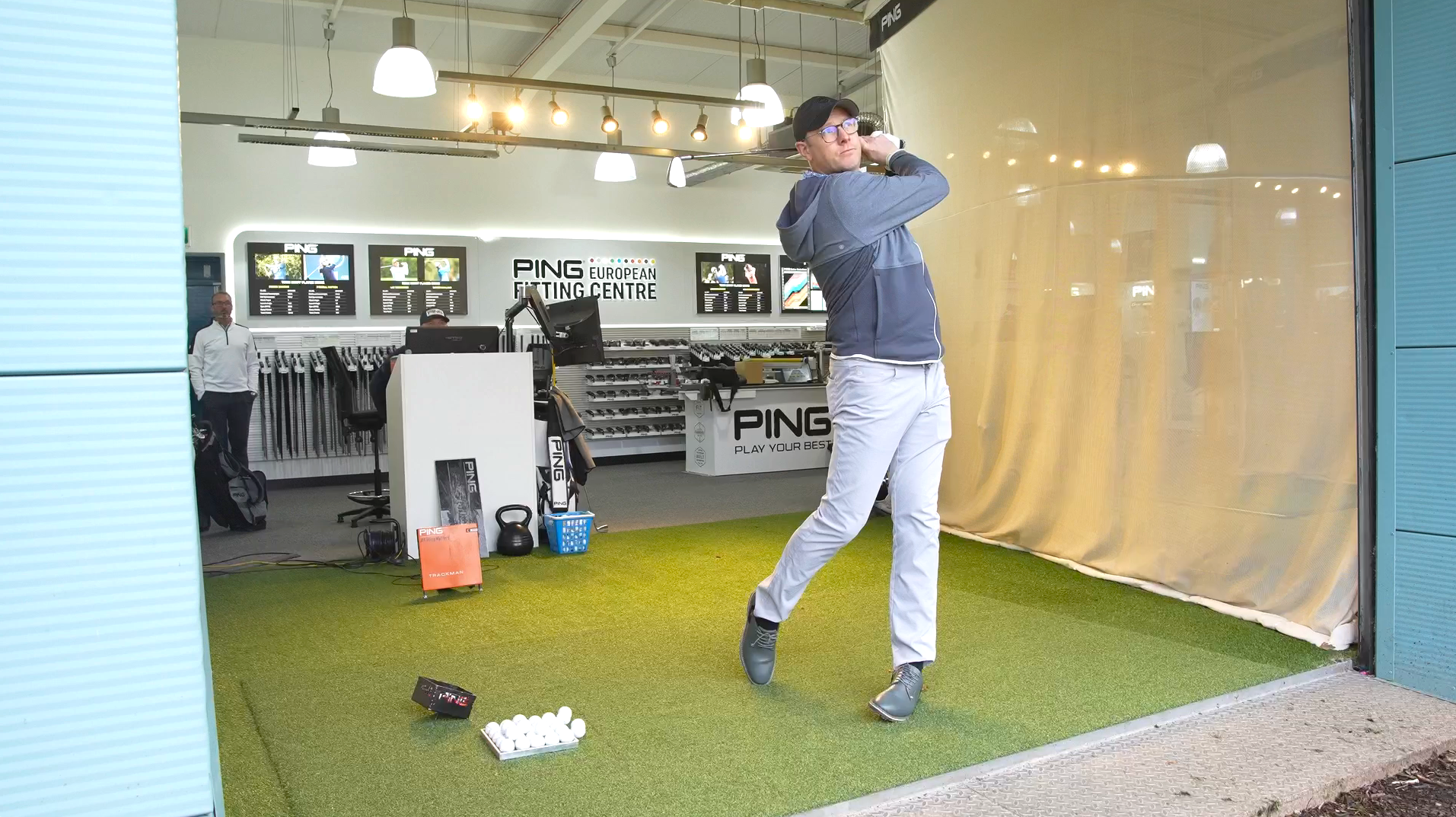
PING Blueprint 2024 Fitting Verdict
Having not been through an iron fitting for 5 years, it was enlightening to see how some new processes have improved the experience. In particular, Billy’s use of the PING co-pilot was fascinating. This helped us get to the right options faster and from there, Billy made smaller adjustments to see the affect on performance.
Interestingly, there is a ‘strokes gained’ metric on PING’s co-pilot that was predicting Blueprint T would save me 3.5 shots per round. Honestly, I think that’s slightly wishful thinking but if true, would get my handicap down towards scratch... which would be a massive personal milestone!
The end result was a true surprise but, as the Arccos data showed, my biggest opportunity for improvement was to tighten up my distance control. The Blueprint T was the clear winner. Moving into a more compact blade might take some adjustment but I now have a stunning set of golf clubs that I know are dialled in to help my own specific requirements. I can’t wait to see where they take me.







